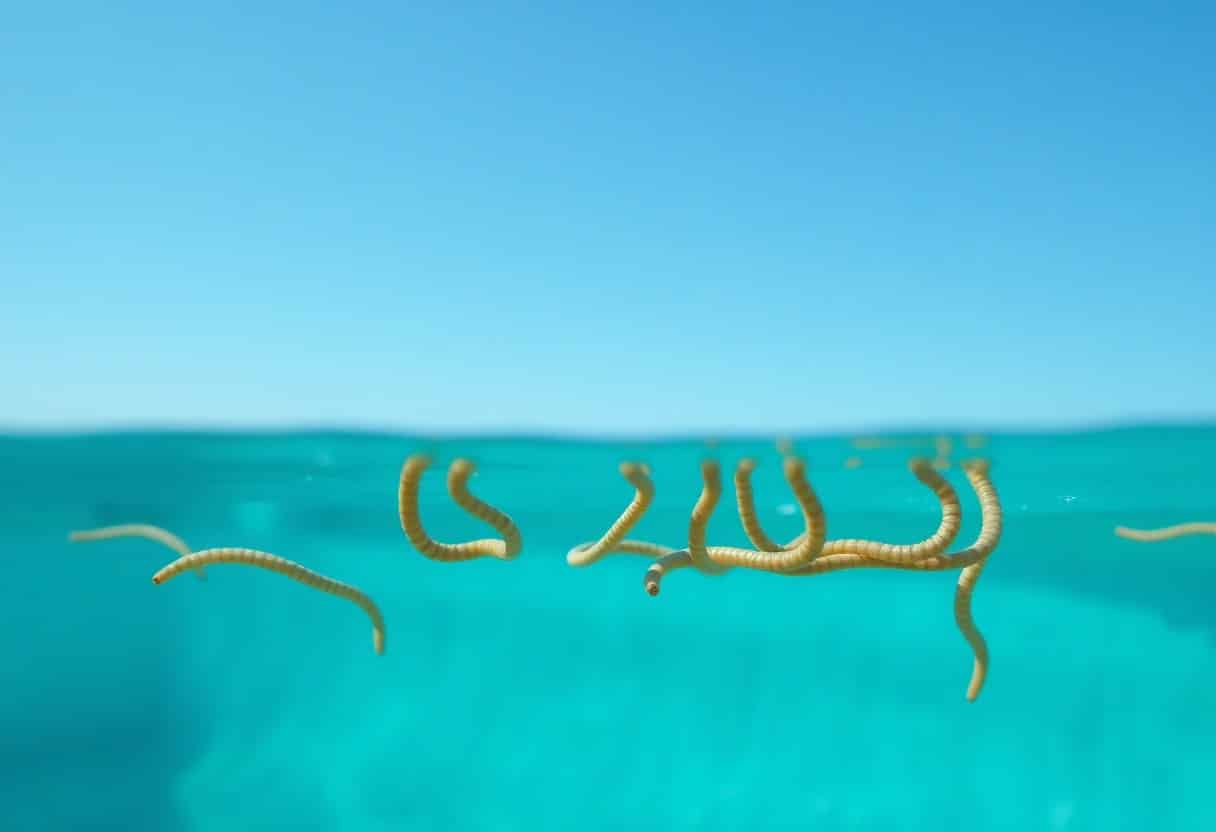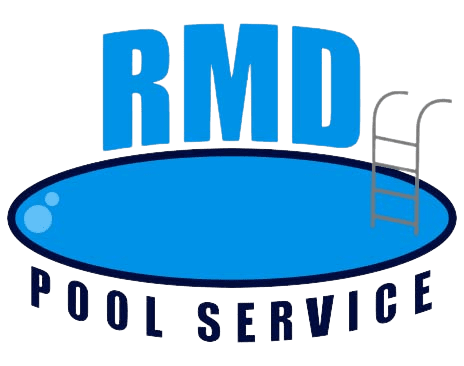You may be wondering why earthworms have made their way into your swimming pool, and you’re certainly not alone in this puzzling situation. These resilient creatures are often drawn to the moist environment and rich organic material that can inadvertently collect around your pool area. Understanding the reasons behind their presence can help you prevent further intrusions and maintain a clean swimming environment. In this post, we will explore how earthworms end up in pools and what you can do about it.
The Unexpected Guests: How Earthworms End Up in Swimming Pools
Finding earthworms in your swimming pool can be jarring, but these creatures often make their way to your backyard oasis through various methods. Rainfall can wash them in, while floods might displace them from their usual habitats. Additionally, if you have any soil or organic matter near the pool, worms might inadvertently slither or burrow towards the inviting waters. Over time, your pool’s chemistry or maintenance practices may create an unforeseen attraction, turning it into an unintended habitat for these wriggly guests.
Natural Pathways: Exploring Entry Points
Earthworms can access your swimming pool through several natural pathways, such as gutters and rainwater drainage systems. These pathways often connect to the soil surrounding your pool, allowing worms to travel through moisture-laden environments. Additionally, small cracks or gaps in your pool’s landscaping or decking can become entry points, inviting these creatures right into your aquatic retreat without you even noticing.
Environmental Conditions that Attract Earthworms
The ideal environment for earthworms tends to be moist and nutrient-rich. If your pool area is surrounded by organic material, like compost or mulch, it’s likely to attract worms. High moisture levels after rainfall or a consistent watering regimen can create a hospitable environment, prompting worms to venture closer to your pool. Surprisingly, even the chemical balance of your pool can impact this, as certain conditions might occasionally draw worms in.
Earthworms thrive in damp conditions rich in decomposing organic matter. When you maintain a lush garden or a thriving lawn adjacent to your pool, you inadvertently create a buffet of nutrients for these critters. Consistent watering practices can enhance moisture levels, leading worms to migrate toward your pool area in search of water and food. For example, after heavy rain, worms may find their usual habitat saturated, prompting them to venture into less flooded areas, such as your pool, which can appear like a peaceful refuge amidst the surrounding deluge.


The Intriguing Benefits of Earthworms in Aquatic Ecosystems
Earthworms contribute significantly to the health of aquatic ecosystems, promoting biodiversity and enhancing overall water quality. Their presence can indicate a thriving environment, as they facilitate nutrient cycling and improve the habitat for various organisms. By burrowing and moving through soil, they aerate the ground and help maintain a balanced ecosystem, which is beneficial even in unusual settings like your swimming pool.
Nitrogen Cycling and Water Quality Improvement
Nitrogen cycling is important for healthy aquatic systems, and this is where earthworms play a pivotal role. As earthworms consume organic matter, they break it down and excrete nutrients in a more accessible form. This process not only enhances nitrogen availability but also contributes to better water quality, preventing harmful algal blooms that can occur in pools with high nutrient levels.
Enhancing Pool Ecosystems: Natural Filtering
Your swimming pool might benefit from the natural filtering capabilities that earthworms provide. Through their activities, they help to break down debris and organic matter, which contributes to a cleaner pool environment. This natural filtration mimics the functions of aquatic plants and other filtration systems, creating a more balanced ecosystem that can potentially reduce the need for chemical treatments.
The filtering process involves earthworms consuming the organic waste and detritus that collects in your pool. As they digest these materials, they excrete waste that acts as nutrient-rich fertilizer, nourishing the surrounding water column. This action not only clears the pool of unsightly debris but also promotes a healthy environment for beneficial microorganisms. This natural balance helps to support a thriving aquatic life, ultimately resulting in a more enjoyable swimming experience for you and your family.
The Detrimental Impact of Earthworms on Pool Maintenance
While earthworms play a vital role in soil and aquatic health, their presence in your swimming pool can create significant maintenance challenges. Accumulating soil and debris can clog filters and reduce water clarity, forcing you into more frequent cleaning schedules. With earthworms often bringing along organic matter, your pool can quickly transform into a murky habitat rather than the refreshing oasis you desire.
Understanding Soil and Debris Accumulation
Soil and debris accumulation in your pool primarily originates from the earthworms themselves. As they enter your pool, they inadvertently transport soil, leaves, and other organic materials into the water. This not only impacts the pool’s appearance but also compromises the chemical balance, leading to potential algae growth and other issues if left unaddressed.
Addressing the Maintenance Challenge for Pool Owners
Confronting the maintenance struggle caused by earthworm presence requires a proactive approach. Implementing a regular cleaning routine and utilizing specialized skimmers can significantly reduce the amount of organic debris entering your pool. Additionally, covering your pool during periods of heavy rainfall can prevent earthworms from migrating in. Allocating time for frequent water tests and adjustments will also help maintain the proper chemistry despite any external challenges posed by nature.
To effectively manage earthworms around your pool, vigilance is key. Adjust your gardening practices near the pool area, such as using barriers to limit soil movement. Investing in a pool vacuum can enhance your cleaning efforts, ensuring effective removal of any stubborn debris left behind. Regularly inspecting your pool’s fencing and surrounding landscape will also minimize the likelihood of worm invasion, giving you peace of mind and a cleaner swimming environment.
Strategies for Prevention: Keeping Earthworms at Bay
Implementing prevention strategies can save you the hassle of dealing with earthworms later on. Start by ensuring your pool area is designed to effectively drain water away from the pool. Landscaping choices play a role too; using gravel or mulch as a barrier can help divert moisture away from grassy areas that are attractive to earthworms. Regular pool maintenance and cleaning, combined with a proactive approach to potential nesting grounds within your yard, can create an inhospitable environment for unwelcome guests.
Practical Tips for Pool Design and Landscaping
Effective pool design and landscaping can significantly reduce the likelihood of earthworms invading your space. Consider installing a proper drainage system that funnels rainwater away from the pool area. Incorporating non-organic materials, such as concrete or paving stones, around the pool can minimize the moisture-rich environments earthworms thrive in. Additionally, planting drought-tolerant shrubs or flowers can limit excess water in your yard. Make sure to also regularly inspect and maintain your garden beds, keeping them well-aerated and free of decomposing organic matter. Perceiving the landscape’s potential as a habitat can help you tailor your strategies effectively.
Effective Remediation Techniques Once Invaded
In the unfortunate event that earthworms have invaded your swimming pool, swift action is necessary to remove them and discourage their return. First, use a net to scoop them out of the water, ensuring you take care to properly place them back into moist soil rather than disposing of them. Following this, inspect your pool for any spots that may harbor moisture, such as pool covers during usage or nearby overwatered plants. Adjusting your cleaning regimen to include regular checks around the pool’s perimeter can reveal problem areas before they escalate.
Another approach when dealing with earthworm invasions is to employ natural deterrents. Garlic or vinegar solutions can be effective in discouraging earthworm migration, as these substances are known due to their strong odors. A mixture of diluted white vinegar sprayed around the pool’s bounds can signal an unwelcoming environment for earthworms. Additionally, regularly pruning adjacent plants and removing debris can significantly cut back on their habitat. Remaining vigilant and consistent with these techniques will reduce future encounters, ensuring your pool area remains an inviting space for enjoyment rather than invasion.

Reevaluating Perceptions: Earthworms as a Symbiotic Force
Shifting your perspective on earthworms helps you appreciate their invaluable role in promoting healthy ecosystems. Rather than viewing them solely as pests when they end up in your pool, recognize that these creatures serve as a vital part of our environment. Their activities improve soil structure, enhance nutrient cycling, and even help mitigate pollutants. By embracing their existence, you can cultivate a deeper understanding of the interconnectedness of species and the importance of every organism in maintaining ecological balance.
The Role of Earthworms in Biodiversity
Earthworms play a significant role in enhancing biodiversity within terrestrial ecosystems. As they burrow through the soil, they facilitate aeration and improve water infiltration, creating a more hospitable environment for various plant species. This process not only supports the growth of diverse flora but also establishes habitats for countless microfauna. Through their feeding habits, earthworms recycle organic matter, enriching soils and promoting a rich tapestry of life above and below ground.
Balancing Ecosystems: The Bigger Picture
Earthworms contribute to ecosystem stability, acting as both detritivores and prey for various animals. Their consumption of decomposing organic material aids in nutrient recycling, leading to healthier soils that foster robust plant life. This, in turn, supports herbivorous species and, subsequently, higher trophic levels. Consequently, earthworms form a backbone in food webs, ensuring a balance that sustains wildlife and plant populations, thereby maintaining ecosystem resilience.
In fact, studies have shown that ecosystems with a healthier population of earthworms tend to exhibit greater resilience to disturbances. For instance, agricultural systems that utilize earthworm populations can reduce the need for chemical fertilizers. In addition, areas rich in biodiversity, supported by earthworm activities, have higher rates of carbon sequestration, which is vital for combating climate change. Balancing these relationships highlights the indispensable role earthworms play in your local ecosystem’s health and sustainability. Understanding this balance supports the idea that even the smallest organisms can create ripples of lasting impact on the environment.
To wrap up
To wrap up, finding earthworms in your swimming pool can be both surprising and puzzling. Understanding how they get there, often through rain or flooding, and their attraction to the moisture can help you manage this issue. You can take preventative measures by maintaining your pool’s cleanliness and surrounding drainage to minimize their presence. By being proactive and mindful of your pool environment, you can enjoy your swimming area without unexpected guests like earthworms disrupting your experience.
